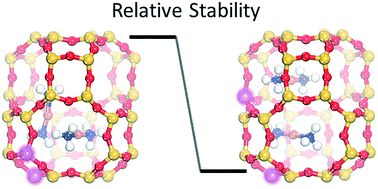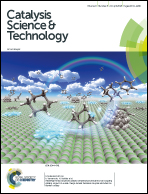Effect of Al-distribution on oxygen activation over Cu–CHA†
Abstract
Cu(NH3)2+-pairs in chabazite (CHA) have been suggested to activate oxygen during low-temperature selective catalytic reduction of nitrogen oxides with ammonia (NH3-SCR). As charge neutrality requires that each Cu-complex is associated with a framework Al, the Al-distribution may affect Cu(NH3)2+-pair formation and subsequent oxygen activation. Here, density functional theory calculations in combination with ab initio molecular dynamics simulations are used to explore Cu(NH3)2+-pair formation and oxygen activation in Cu–CHA. The Al-distribution is found to markedly affect the probability for Cu(NH3)2+-pair formation. Moreover, the molecular dynamics simulations reveal a low-energy reaction path for O2 activation and dissociation. The facile O2 dissociation suggests that Cu-pair formation rather than O2 activation governs the low-temperature NH3-SCR activity. The results indicate that precise synthesis of Cu-exchanged chabazite with respect to Al-distribution may enhance the catalytic activity.



 Please wait while we load your content...
Please wait while we load your content...